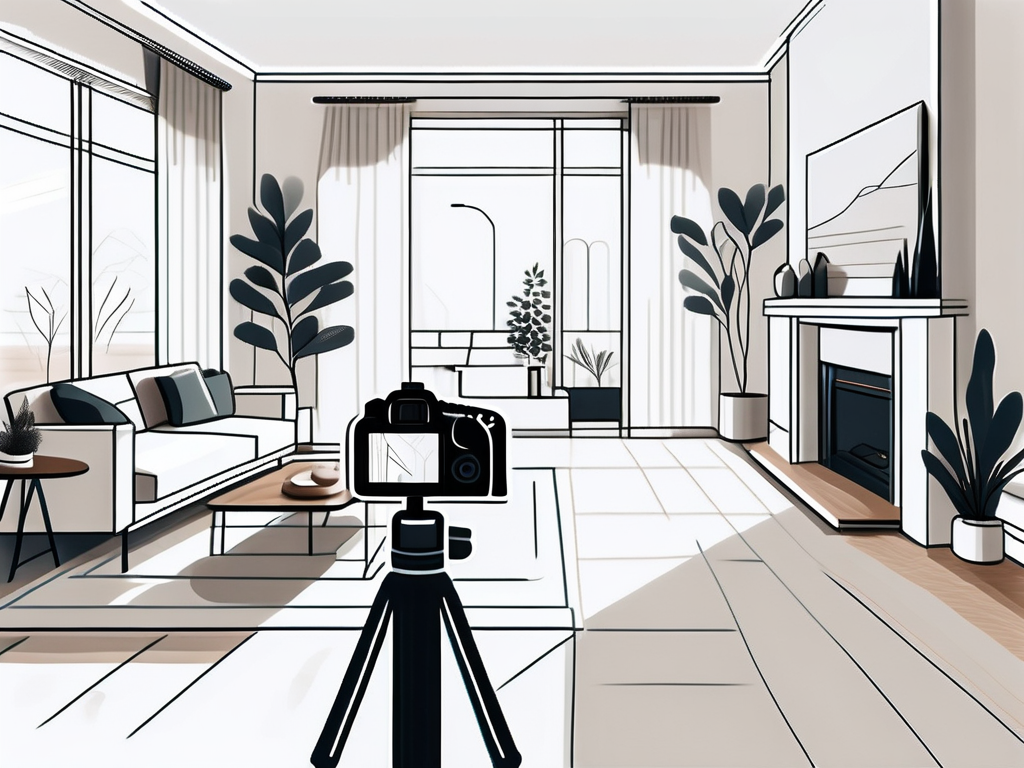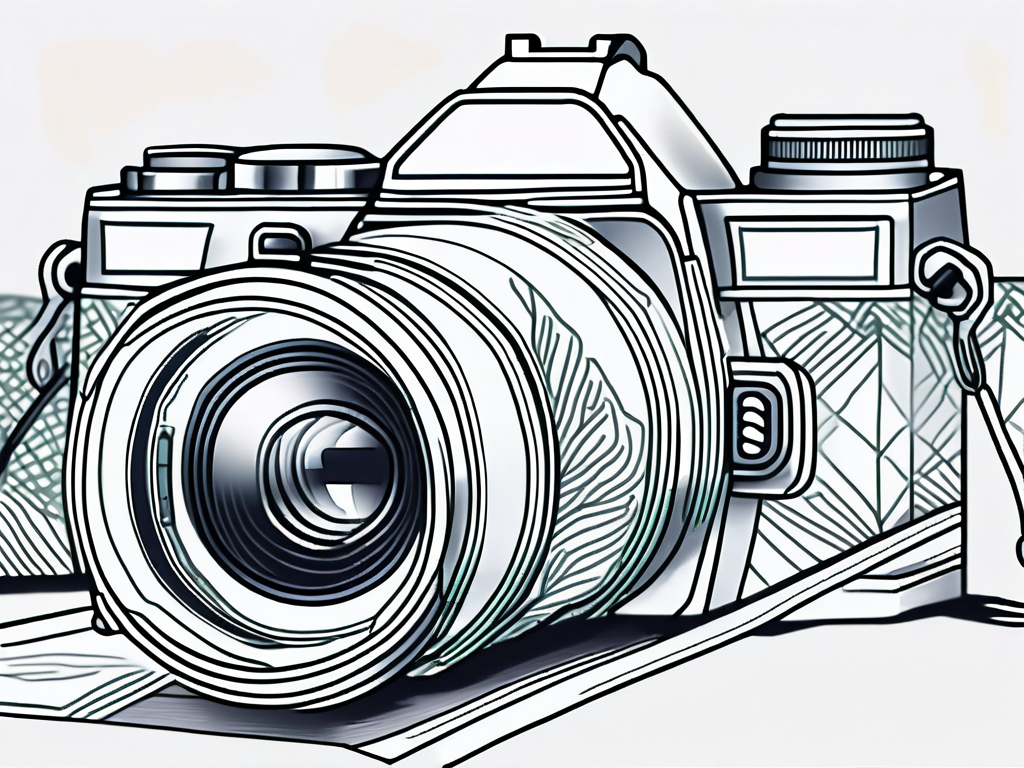In the world of real estate photography, understanding the terminology is crucial for both photographers and clients alike. This glossary aims to demystify the key terms and concepts in real estate photography, from the importance of captivating images to the technical aspects of the process. Whether you’re a homeowner looking to sell your property or a professional photographer specializing in real estate, this guide will equip you with the knowledge needed to navigate the world of real estate photography.
Understanding Real Estate Photography
Real estate photography plays a vital role in capturing the essence and selling points of a property. It goes beyond simply taking pictures – it is about showcasing the features of a home in a visually appealing and enticing way. Effective real estate photography can significantly impact the selling potential and overall value of a property.
The Importance of Real Estate Photography
The saying “a picture is worth a thousand words” holds true in the realm of real estate. High-quality photographs can attract potential buyers, generate interest in a property, and even expedite the selling process. They provide a visual narrative that allows potential buyers to imagine themselves living in the space.
Real estate photography is often the first impression that potential buyers have of a property. It serves as a powerful marketing tool, highlighting the property’s unique features, architectural details, and overall ambiance. As a result, it is crucial to invest in professional real estate photography to maximize the property’s appeal.
Imagine this: a potential buyer is scrolling through online listings, searching for their dream home. Suddenly, they come across a property with captivating images that showcase the spacious living room bathed in warm natural light, the gleaming hardwood floors, and the stunning panoramic views from the balcony. Instantly, their interest is piqued, and they can’t help but imagine themselves sipping their morning coffee while enjoying the breathtaking sunrise. This is the power of real estate photography – it creates an emotional connection and sparks the imagination.
Key Elements of Real Estate Photography
When capturing images of a property, several key elements contribute to successful real estate photography. These elements include composition, lighting, and staging.
Composition refers to the arrangement and positioning of various elements within the frame. A well-composed photograph guides the viewer’s eye, emphasizing the property’s best features and creating a sense of balance. It involves carefully selecting angles and viewpoints that highlight the property’s unique selling points.
Imagine this: a skilled real estate photographer steps into a room, meticulously analyzing the space from every angle. They consider the architectural details, the flow of natural light, and the best way to capture the essence of the room. They might choose to shoot from a low angle to emphasize the high ceilings or use leading lines to draw the viewer’s eye towards a focal point. Every decision they make is intentional, aimed at creating a visually captivating image that showcases the property’s true potential.
Lighting is another crucial aspect of real estate photography. Proper lighting not only ensures that the property is accurately portrayed but also sets the mood and ambiance. Natural light is often preferred, as it can create an inviting and warm atmosphere. However, artificial lighting techniques can also be employed to enhance the overall look of the images.
Imagine this: the sun is setting, casting a warm golden glow across the property’s meticulously landscaped backyard. The real estate photographer skillfully captures this magical moment, using the soft, warm light to highlight the inviting pool, the cozy outdoor seating area, and the lush greenery. The resulting image evokes a sense of tranquility and relaxation, enticing potential buyers to envision themselves unwinding in this serene oasis.
Staging involves arranging and organizing the space to create an inviting atmosphere that resonates with potential buyers. It includes decluttering, arranging furniture, and adding decorative elements to showcase the property’s potential. A well-staged property allows potential buyers to envision themselves living in the space.
Imagine this: a professional stager meticulously arranges furniture, strategically placing each piece to create a sense of flow and maximize the space. They add decorative elements, such as fresh flowers and tasteful artwork, to create a welcoming and inviting ambiance. The result is a space that feels like a home – a place where potential buyers can picture themselves creating memories and building a future.
In conclusion, real estate photography is a powerful tool that can make a significant impact on the selling potential and overall value of a property. By understanding the importance of high-quality images and the key elements of real estate photography, sellers can effectively showcase their property’s unique features and create an emotional connection with potential buyers. So, whether you’re a seller or a buyer, remember the power of a well-captured image – it can truly make a difference.
Basic Photography Terms
Before delving into the realm of real estate photography-specific terms, it is essential to familiarize oneself with the basic photography terminology.
Photography is a fascinating art form that allows us to capture moments, tell stories, and express our creativity through images. To fully appreciate the world of real estate photography, it’s important to understand the fundamental concepts and equipment that make it all possible.
Common Photography Equipment
In real estate photography, several key pieces of equipment are used to capture stunning images. A DSLR camera with interchangeable lenses provides the versatility and control needed to showcase a property effectively. With its ability to capture high-resolution images and adjust settings to suit different lighting conditions, a DSLR camera is a real estate photographer’s best friend.
But it’s not just the camera that matters; the choice of lenses can greatly impact the final result. Wide-angle lenses are particularly popular in real estate photography, as they enable the capture of more expansive views and emphasize the spaciousness of a property. These lenses allow photographers to showcase the grandeur of a living room or the breathtaking beauty of a landscape surrounding a house.
Other essential equipment includes a sturdy tripod, which ensures sharp images, especially in low-light conditions. A tripod provides stability and eliminates camera shake, resulting in crisp and clear photographs. Additionally, remote shutter releases and external flashes are often utilized to enhance control over the exposure and lighting. These tools allow photographers to fine-tune the lighting and capture the perfect shot, highlighting the best features of a property.
Essential Photography Techniques
Understanding and implementing essential photography techniques can elevate real estate images to the next level. These techniques help photographers capture the essence of a property and create visually stunning compositions.
One such technique is bracketing, which involves capturing multiple exposures of the same frame. By taking a series of shots with different exposure settings, photographers can ensure that both the bright and dark areas of the image are properly exposed. This technique is particularly useful when photographing interiors with windows, as it allows for a balanced exposure that showcases both the interior details and the outside view. Bracketed images can be merged during post-production to create a well-balanced final photograph that accurately represents the property.
Another vital technique is the rule of thirds, which involves dividing the frame into a grid of nine equal sections. Placing key elements along the gridlines or at the intersections creates more visually appealing and balanced compositions. By adhering to this rule, photographers can create images that draw the viewer’s attention to the most important elements of the scene, whether it’s a stunning architectural detail or a beautiful landscape.
Mastering these techniques and understanding the equipment involved in real estate photography is crucial for capturing captivating images that truly showcase the beauty and unique features of a property. With the right knowledge and tools, photographers can create images that leave a lasting impression on potential buyers and help them envision their future home.
Real Estate Photography Specific Terms
Now that we have covered the basics, let’s dive into the real estate photography specific terms that every photographer and client should be familiar with.

Architectural Photography Vocabulary
Architectural photography focuses on capturing the design and structure of buildings. It requires an understanding of architectural vocabulary, such as facades, symmetry, and lines of sight. Correctly utilizing these terms enables photographers to effectively capture the unique architectural features and character of a property.
Interior Photography Jargon
Interior photography, as the name suggests, focuses on capturing the interior spaces of buildings. Several jargon terms are associated with this particular genre. Some examples include staging, composition, focal length, and ambient lighting. Understanding these terms empowers photographers to highlight the beauty and functionality of the interior spaces.
Post-Production Terminology
Once the photographs have been captured, they often undergo post-production to refine their appearance and ensure they are ready for showcasing.

Editing Tools and Techniques
Editing tools and techniques are employed during post-production to enhance and refine photographs. Software such as Adobe Photoshop and Lightroom are commonly used to adjust exposure, white balance, color saturation, and sharpness. These tools enable photographers to achieve consistent and professional results.
Photo Enhancement Terms
Photo enhancement terms refer to the specific techniques used to enhance the visual appeal of a photograph. These techniques may include color correction, perspective correction, noise reduction, and retouching. Photo enhancement ensures that the final images accurately represent the property while having an added visual impact.
Business and Legal Terms in Real Estate Photography
In addition to the technical aspects, various business and legal terms are important to understand when venturing into the world of real estate photography.

Understanding Copyright and Licensing
Copyright and licensing are crucial aspects of real estate photography. Copyright refers to the legal ownership of creative works, including photographs. Photographers maintain the copyright to their images, unless explicitly transferred or licensed to a client or third party. Understanding the intricacies of copyright and licensing protects photographers’ intellectual property rights and ensures fair compensation for their work.
Pricing and Contract Terms
Pricing and contract terms are essential considerations for both photographers and clients. Pricing models vary, and they may be based on factors such as the size of the property, the number of images required, and additional services included. Contracts outline the rights and responsibilities of both parties, including usage rights, payment terms, and project specifications.
In conclusion, mastering the terminology and concepts of real estate photography is essential for photographers and clients alike. Understanding the importance of captivating images, the technical aspects of photography, and the business and legal considerations allows one to navigate the real estate photography industry with confidence. Whether you are a homeowner looking to sell your property or a professional photographer seeking to excel in this field, this glossary provides a comprehensive foundation for success.

Leave a Reply
You must be logged in to post a comment.